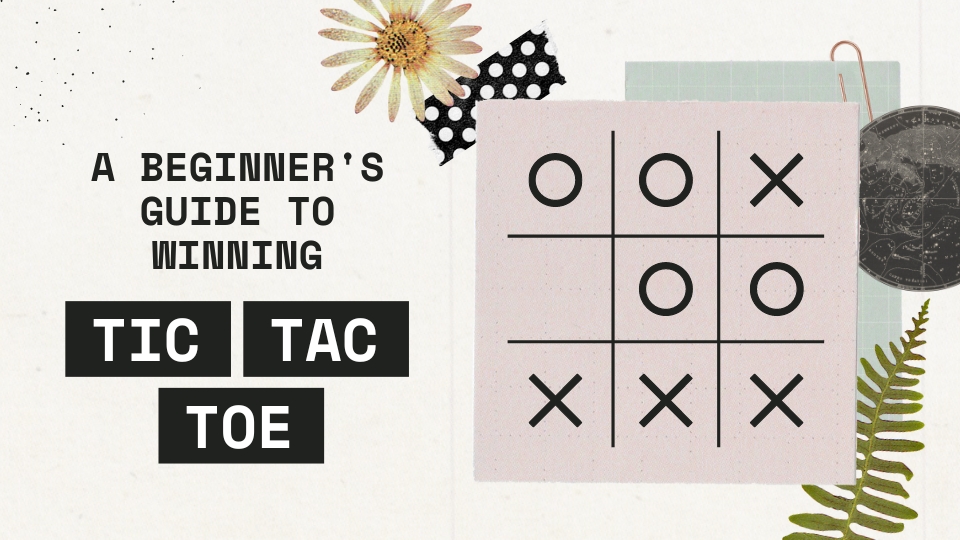Mastering the Basics: A Beginner's Guide to Winning Tic Tac Toe
Tic Tac Toe, a seemingly simple game, is more than just child's play. Beyond its humble appearance lies a strategic depth that can be mastered with the right approach. In this comprehensive beginner's guide, we will delve into the fundamental strategies, psychological insights, and winning tactics that can turn even the most casual game of Tic Tac Toe into a triumph of strategic prowess.

I. Understanding the Basics: The Anatomy of Tic Tac Toe
Before delving into winning strategies, it's crucial to understand the basic mechanics of Tic Tac Toe. The game is played on a three-by-three grid, and two players take turns marking an empty cell with their respective symbols—traditionally "X" and "O." The objective is to create a horizontal, vertical, or diagonal row of three of your symbols.
The simplicity of Tic Tac Toe can be deceptive, as the game's straightforward rules set the stage for a nuanced battle of wits.
II. The Opening Move: Setting the Stage for Victory
The first move in Tic Tac Toe is pivotal, as it sets the tone for the entire game. Experienced players know that the center square is the most strategic starting point. Placing your symbol in the center maximizes your control over the board and provides multiple avenues for victory.
Choosing a corner as your opening move is also a solid strategy. However, the center square offers a more balanced approach, allowing for greater flexibility in subsequent moves.
III. Creating Forks: The Art of Duplicity
One advanced strategy in Tic Tac Toe involves creating forks, a situation in which a player has two ways to win on the next move. To achieve this, you must position your symbols in a way that forces your opponent to respond in a manner that opens up multiple opportunities for you.
Consider a scenario where you have two X's in a row with an open space next to them. Placing your next X in the open space creates a fork—your opponent must block one threat, leaving the other open for your victory.
IV. Blocking Forks: Defensive Maneuvers
While aspiring to create forks, it's crucial to be vigilant about preventing your opponent from doing the same. Recognizing potential forks and strategically blocking them is a defensive tactic that can thwart your opponent's plans.
For instance, if your opponent has two O's in a row with an open space, placing your X in that space prevents them from creating a fork and puts you back in control.
V. The Center-Control Strategy: Key to Dominance
Securing control of the center square is not only a powerful opening move but a strategy to maintain throughout the game. The player who controls the center maintains more options and restricts their opponent's possibilities.
This strategic principle extends beyond the opening moves. If you find yourself losing control of the center, regaining it should become a priority. The center square acts as the fulcrum of the game, influencing the balance of power on the board.
VI. Forcing a Draw: The Sign of a Seasoned Player
In the pursuit of victory, it's essential to recognize when a win is not possible and shift your focus to forcing a draw. Tic Tac Toe, when played optimally by both players, will always result in a draw.
Knowing how to recognize this inevitability and steer the game towards a draw is a sign of a seasoned Tic Tac Toe player. This skill is particularly valuable in competitive settings where securing a draw can be a strategic win.
VII. Psychological Tactics: Reading Your Opponent
Beyond the mathematical and strategic aspects, Tic Tac Toe involves a psychological dimension. Observing your opponent's moves can provide valuable insights into their strategy and intentions. If they consistently prioritize corners or edges, adjust your approach accordingly.
Additionally, consider employing misdirection—leading your opponent to believe you're pursuing a certain strategy while secretly setting up a different path to victory. Psychology plays a subtle yet crucial role in the mind game of Tic Tac Toe.
VIII. Learning from Losses: Iterative Improvement
No guide to winning Tic Tac Toe would be complete without emphasizing the importance of learning from losses. Each game, whether a win or a loss, is an opportunity for improvement. Analyze your moves, identify patterns in your opponent's strategy, and continuously refine your approach.
Consider playing against opponents of varying skill levels to expose yourself to different strategies. Learning from defeats is a hallmark of a player committed to mastering the game.
Tic Tac Toe, often dismissed as a simple children's game, conceals a depth of strategy that becomes apparent with a focused and informed approach. By mastering the basics, understanding key strategies, and honing psychological insights, players can elevate Tic Tac Toe from a casual pastime to a competitive pursuit. So, whether you're playing with friends, family, or against AI, armed with the knowledge from this guide, you're well-equipped to turn the next game of Tic Tac Toe into a triumph of strategic brilliance.